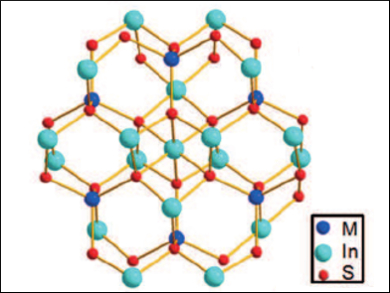Platinum counter electrodes are a critical component of dye-sensitized solar cells (DSSCs). They regenerate the I3−/I− redox electrolyte. However, the expense and rarity of platinum threaten the commercial viability of DSSCs.
In a search for cheaper alternatives, Yaoming Xiao, Gaoyi Han, and colleagues, Shanxi University, Taiyuan, China, have used an in situ solvothermal method to fabricate porous nanosheet arrays of ternary thiospinels (MIn2S4; M = Fe, Co, Ni) on conducting fluorine-doped tin oxide. The material offers abundant active sites for I3− reduction, channels for rapid electrolyte transport and charge transfer, and appropriate energy level alignment at the electrode interface.
A CoIn2S4 counter electrode with a large 144.07 m2g–1 specific surface area reached an 8.83 % photoelectric conversion efficiency in full sunlight, which rivals that of platinum. The researchers believe MIn2S4 could replace platinum electrodes in other electrocatalytic applications. The compounds could also possibly be used in wearable devices because they can be prepared on flexible substrates.
- An Interconnected Ternary MIn2S4 (M=Fe, Co, Ni) Thiospinel Nanosheet Array: A Type of Efficient Platinum-Free Counter Electrode for Dye-Sensitized Solar Cells,
Wenjing Hou, Yaoming Xiao, Gaoyi Han,
Angew. Chem. Int. Ed. 2017.
DOI: 10.1002/anie.201705399


